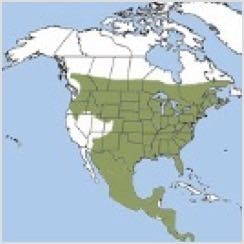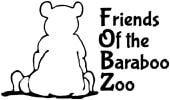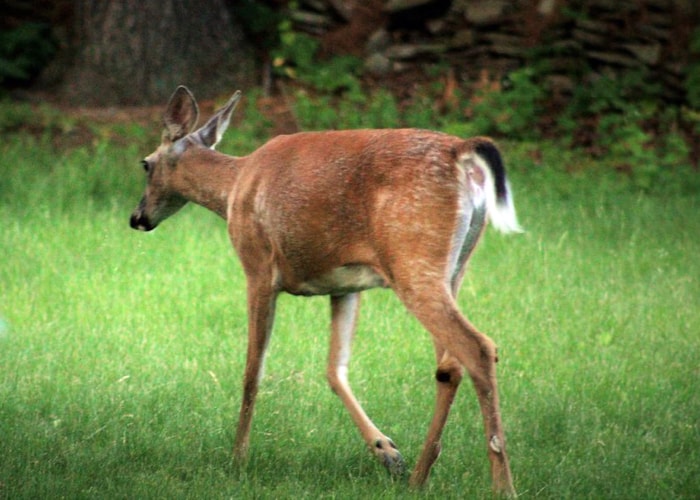White-Tailed Deer
Odocoileus virginianus
Conservation Status: Least Concern
Characteristics:
- They are reddish brown with a white belly and tail in summer.
- In the winter the reddish brown changes to grayish brown.
- They have hooved feet, slender bodies, and long, thin legs.
- They are herbivores and ruminants. They chew their food, swallow it, regurgitate it, and then swallow again.
- Their stomachs have four chambers. The first chamber is called the rumen. This contains bacteria that helps break down plant matter.
- Male deer, also called bucks, have antlers.
- Female deer, also called does, do not have antlers.
Lifespan: Wild deer live up to 10 years. Captive deer can live up to 20 years.
Range and Habitat:
- Can be found in southern Canada and most of the United States except for the southwest, Alaska, and Hawaii.
- They are edge species – prefer transitional spaces between forested areas and open spaces.

Diet:
- Legumes, shoots, leaves, cacti, and grass.
- Acorns, corn, and fruit.
Behavior:
- Extremely nervous and shy.
- Can run up to 36 miles per hour.
- Great swimmers.
- Can leap over 10 feet high and 30 feet long.
Fun Facts:
- “White-tailed” refers to the white underside of the deer’s tail which it displays and wags when it senses danger.
- Whitetail deer only wag their tails when they are startled.
- They are the smallest of the North American deer.
- They have perfectly healthy vision and hearing, but they rely mainly on their sense of smell for protection.
Keeper Notes:
“The Golden Girls”, a set of twins and two sisters were born in 2008 and 2009 at the zoo. Breeding deer was once a part of the zoo, but it was deemed irresponsible and the practice was discontinued. The deer enjoy their large home in the front of the park that they share with the geese, cranes, and Walter.

